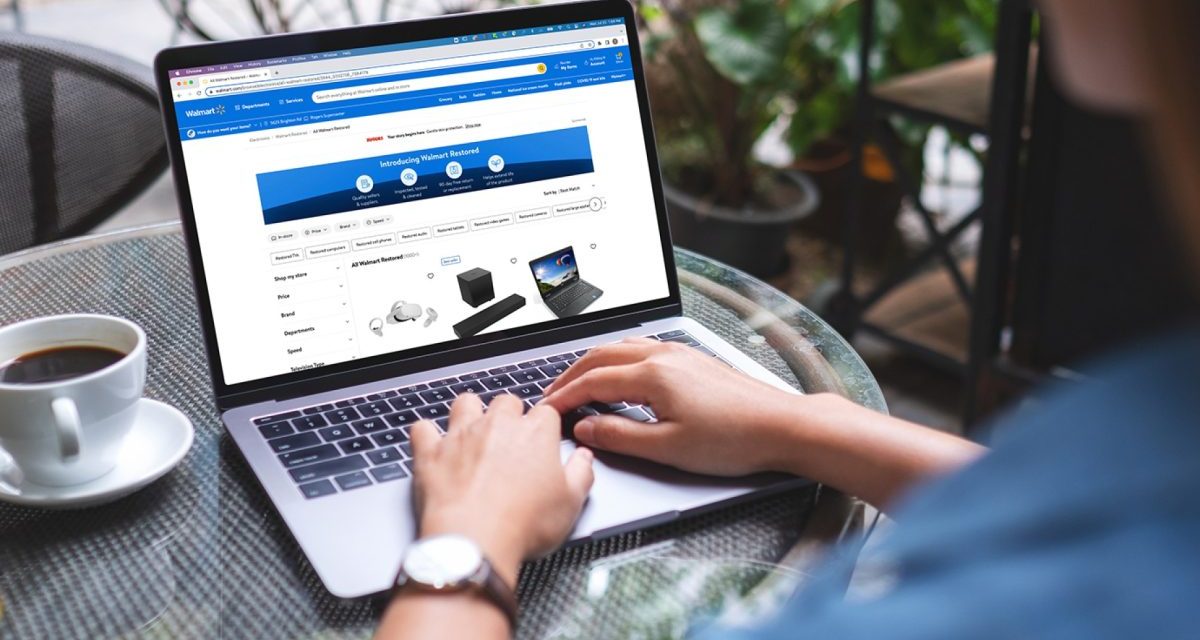As online eyewear goes mainstream, fully virtual eye exams remain elusive

Walmart is making big investments into its vision department this year, adding a virtual try-on service to its online services to keep up with DTC brands like Warby Parker, Pair and Zenni. The service takes a scan of the user’s face then shows them what the frames would look like – as well as measuring the distance between their pupils to help ensure the correct lens measurements.
Virtual try-ons are now mainstream among retailers, as well as pupillary distance tests. But the $65.6 billion optical market industry is still a way off from unveiling a fully digital eye exam. Questions around accuracy of measurements and ease of access inhibit the launch of a fully digital service. And there’s some evidence that online eye care still has room to grow. The Vision Council, a global nonprofit that tracks industry trends, found last year that while 79% of U.S. adults regularly wear some form of corrective eyewear, 43% haven’t received an eye exam in the past year. And 34% of Americans didn’t seek out telehealth solutions for eye care because they never heard of it.
For Walmart’s part, vision care is a growing part of its telehealth serves as well as its overall e-commerce presence. It’s increasing its online selection of frames from about 750 to more than 1,000 styles. And it also increased staffing and salaries for its in-store opticians, who are also available to online shoppers for chats and questions.
“With 90% of the U.S. population living within 10 miles of a Walmart store, our goal is to ensure we are serving our communities with quality care. For rural communities, teleoptometry allows us to do this, where state regulations allow. One doctor can serve multiple sites remotely and increase access for customers, which also provides flexibility for the optometrist,” a Walmart spokesperson told Modern Retail in an email.
Sophia Edelstein, co-founder of online glasses retailer Pair, said virtual try-ons are becoming the industry standard as a way to help replicate the in-store experience. Pair offers frames that magnetize onto a base frame to change up the look and color of the glasses, and customers who have tried them on virtually “are feeling very confident the frame is going to fit,” she said. It also helps lower return rates by giving the customer a better sense of how they look.
“The online experience is able to create the same sense of trust that you really get by going into the store,” she said. “You’re not touching and feeling the product, but you’re shopping this massive category of thousands of top frames and designs, while feeling very comfortable.”
But whether that experience could be taken to the next level with a fully digital experience may be a ways off, Edelstein said.
“If you asked people in the industry five years ago, ‘In your lifetime are we going to be able to do prescription eyewear exams online?’ I think a lot of people would’ve said no. There’s been a lot of advancements where companies now exist that have created that technology,” Edelstein said. “It’s really a questions of accuracy and efficacy.”
So far, the most mainstream brand that providers a way for people to renew a prescription online with a doctor is Warby Parker. In 2021, it debuted a virtual vision test that its developers built in-house off of Apple’s Vision Framework. But the $15 tool is meant to help those that have a single-vision prescription, not those with bifocals. It also is recommended that the user doesn’t have any other eye health issues and can already see well with their current prescription. Users take a quiz to ensure they’re a good fit for the exam — and then a doctor reviews the results before the prescription is filled. But it’s not meant to replace an eye exam with a doctor examining someone’s eye health.
“It is important to note that Virtual Vision Tests are not meant to replace visits with your eye doctor, and you should be getting your eye health examined periodically even if you aren’t experiencing any vision problems,” the spokesperson said.
At Pair, Edelstein said the company is aiming to facilitate new prescriptions by recently launching an in-store partnership with America’s Best so customers can get a prescription in store and then shop frames in person or online. Edelstein said that digital eye exam services won’t likely become mainstream until much more FDA testing can be done to ensure they’re as accurate as one in person.
“These tools need to first and foremost work just as well as their traditional counterparts, otherwise we’re not really improving anything,” Edelstein said.
Anarghya Vardhana, a partner with Maveron who invests in health tech companies, said the main difficulty in getting a digital eye exam off the ground is the question around accuracy. There’s the physical considerations — like not being able to get an “air puff” glaucoma test — or having sub-optimal considerations in the patient’s home regarding lighting or glitchy WiFi that could create errors.
“Doing accurate eye readings with all of these possible errors can be very challenging,” she said. “It’s a category where you don’t get a lot of additional customer ease by offering a virtual solution, but could potentially open up a lot of issues.”

